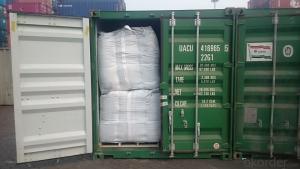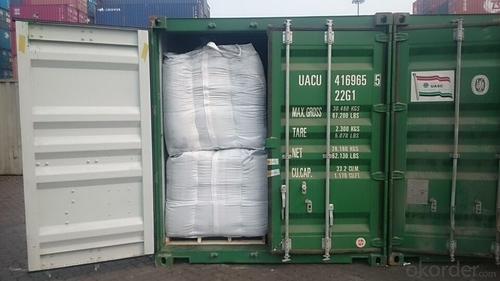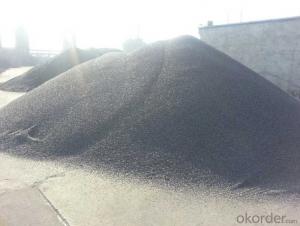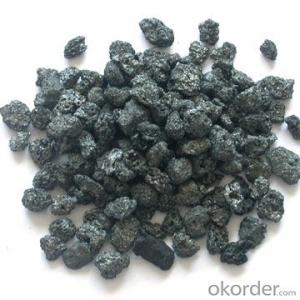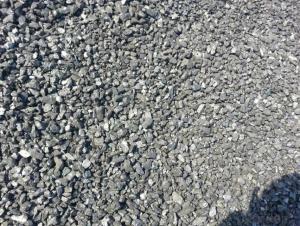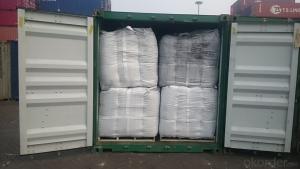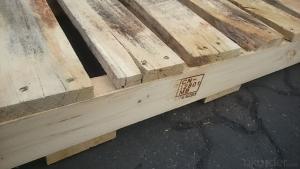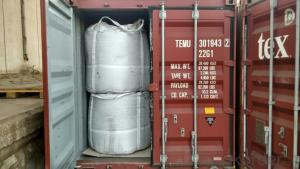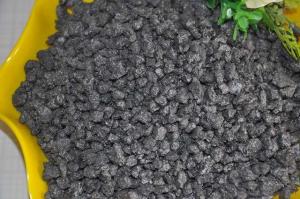Used in EAF as Carbon Additive for Steel Mills
- Loading Port:
- Tianjin
- Payment Terms:
- TT OR LC
- Min Order Qty:
- 21 m.t.
- Supply Capability:
- 6000 m.t./month
OKorder Service Pledge
OKorder Financial Service
You Might Also Like
Introduction:
Calcined anthracite can be called carbon additive, carbon raiser, recarburizer, injection coke, charging coke, gas calcined anthracite.
Carbon Additive/Calcined Anthracite Coal may substitute massively refinery coke or graphite. Meanwhile its cost is much less than the refinery coke and graphite. Carbon Additive is mainly used in electric steel ovens, water filtering, rust removal in shipbuilding and production of carbon material.
It has good characteristics with low ash, low resistivity, low sulphur, high carbon and high density. It is the best material for high quality carbon products. It is used as carbon additive in steel industry or fuel.
Features:
Best quality Taixi anthracite as raw materials through high temperature calcined at 800-1200 ℃ by the DC electric calciner with results in eliminating the moisture and volatile matter from Anthracite efficiently, improving the density and the electric conductivity and strengthening the mechanical strength and anti-oxidation, It has good characteristics with low ash, low resistivity, low carbon and high density. It is the best material for high quality carbon products, it is used as carbon additive in steel industry or fuel.
Specifications:
F.C.% | 95MIN | 94MIN | 93MIN | 92MIN | 90MIN | 85MIN | 84MIN |
ASH % | 4MAX | 5MAX | 6 MAX | 6.5MAX | 8.5MAX | 12MAX | 13MAX |
V.M.% | 1 MAX | 1MAX | 1.0MAX | 1.5MAX | 1.5MAX | 3 MAX | 3 MAX |
SULFUR % | 0.3MAX | 0.3MAX | 0.3MAX | 0.35MAX | 0.35MAX | 0.5MAX | 0.5MAX |
MOISTURE % | 0.5MAX | 0.5MAX | 0.5MAX | 0.5MAX | 0.5MAX | 1MAX | 1MAX |
Pictures

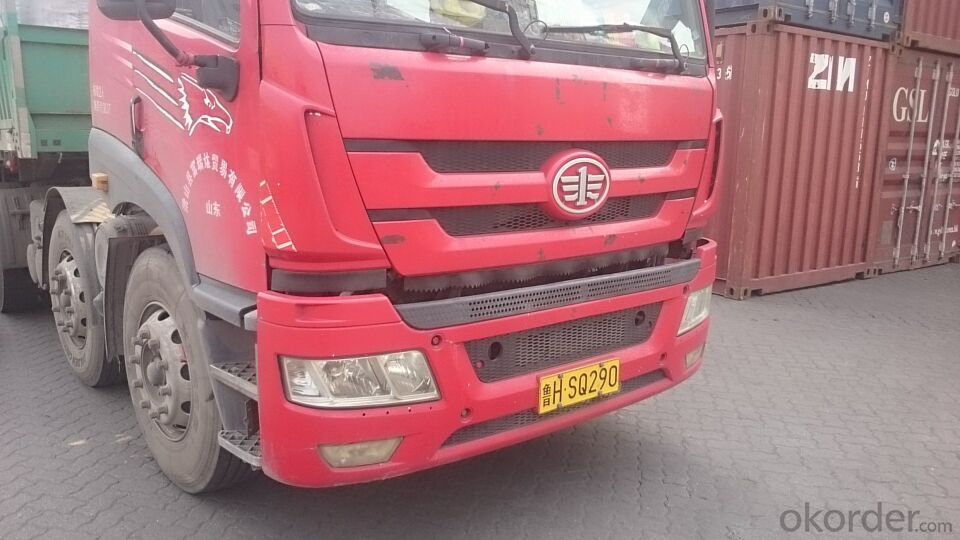


FAQ:
Packing:
(1). Waterproof jumbo bags: 800kgs~1100kgs/ bag according to different grain sizes;
(2). Waterproof PP woven bags / Paper bags: 5kg / 7.5kg / 12.5kg / 20kg / 25kg / 30kg / 50kg small bags;
(3). Small bags into jumbo bags: waterproof PP woven bags / paper bags in 800kg ~1100kg jumbo bags.
Payment terms
20% down payment and 80% against copy of B/L.
Workable LC at sight,
- Q: What is carbon neutral certification?
- The process of carbon neutral certification involves evaluating and verifying organizations, products, or services to ensure they have a carbon footprint that equals zero. This requires taking significant measures to reduce greenhouse gas emissions and offsetting any remaining emissions through the purchase of carbon credits or investments in projects that remove carbon dioxide from the atmosphere. To achieve carbon neutrality, entities undergo a thorough assessment that measures their carbon emissions, sets reduction targets, implements initiatives to reduce their carbon footprint, and tracks progress. After reducing emissions as much as possible, any remaining emissions are offset by investing in verified projects such as reforestation, renewable energy, or energy efficiency projects that reduce greenhouse gases. Certification is conducted by an independent third-party organization to evaluate and verify carbon neutrality claims, ensuring transparency and credibility. Once certified, organizations or products can display the carbon neutral label to demonstrate their commitment to environmental sustainability and responsible carbon management. Carbon neutral certification is crucial as it offers a standardized and recognized method for organizations and products to showcase their dedication to combating climate change. It enables consumers and stakeholders to make informed choices by supporting entities that have taken concrete steps to reduce their carbon emissions and contribute to a more sustainable future. Moreover, carbon neutral certification encourages organizations to adopt sustainable practices and invest in environmentally positive projects, thus hastening the transition to a low-carbon economy.
- Q: What is the role of carbon in the formation of coal, oil, and natural gas?
- The role of carbon in the formation of coal, oil, and natural gas is that it is the primary component in these fossil fuels. Over millions of years, organic matter such as plants and microscopic organisms are buried under layers of sediment. The heat and pressure of the Earth's crust over time converts this organic matter into fossil fuels. Carbon, being the main element in these organic materials, is preserved and transformed into coal, oil, and natural gas through this process.
- Q: How to identify a laptop shell is carbon fiber
- Carbon fiber, as its name suggests, is made from carbon fiber, so there are several characteristics. First, if it is not colored, you can see the obvious fiber. Second is black carbon color. And it's a lot more than ABS.
- Q: Last night to go to the supermarket to buy 5 batteries, see Toshiba carbon batteries, I finally bought the super alkaline batteries, alkaline batteries and carbon is the difference in where? What kind of battery is best for digital cameras? Thank you
- Alkaline capacity, not drip waterThe camera needs to be chargedBuy expensive at the supermarket
- Q: Just come out to work, do activated carbon, often see carbon materials and carbon materials, I do not know what the difference, trouble you!
- Carbon refers to elements. Carbon materials usually refer to materials that contain carbon and are the main bodyCarbon is a carbon containing substance of no composition and property consisting of carbon elements
- Q: What is the most common isotope of carbon?
- Carbon-12, the most prevalent carbon isotope, derives its name from its atomic mass of 12 atomic mass units, determined by the composition of protons and neutrons in its nucleus. It dominates the natural abundance of carbon, comprising approximately 98.9% of all carbon atoms. In contrast, carbon-13 and carbon-14, the other two carbon isotopes, occur in lesser quantities and proportions. Being stable and resistant to radioactive decay, carbon-12 holds great significance as a vital element for sustaining life on our planet.
- Q: How do humans contribute to carbon emissions?
- Humans contribute to carbon emissions through various activities, such as burning fossil fuels for electricity, transportation, and heating; deforestation and land-use changes; industrial processes; and the production and disposal of waste. These actions release significant amounts of carbon dioxide and other greenhouse gases into the atmosphere, exacerbating the greenhouse effect and contributing to climate change.
- Q: I saw a cell phone in the magazine, the global release of 900, no camera, what function is F1 carbon fiber material, actually sold 40000 yuan a piece!.. Everyone said that the circulation is so small, worth so much money? Or carbon fiber material worth so much money?
- See where, in a car for example transformation kit, with super run even if the civil area shape roughly the same but the price difference, if you feel that things are expensive, natural carbon prices go up, in fact carbon species layout production process characteristics of professional strength lot, do not understand
- Q: What are the problems that should be paid attention to in the injection molding of the material? Who has some details about carbon fiber injection? Thank you for sharing
- You can go directly to the Chinese HowNet or the census, there should be some.
- Q: How does carbon affect the acidity of oceans?
- The acidity of oceans is greatly influenced by carbon dioxide (CO2). Human activities like burning fossil fuels and deforestation release CO2 into the atmosphere, a significant portion of which is absorbed by the oceans. This absorption, known as ocean acidification, causes an increase in hydrogen ions in the water, leading to lower pH levels and higher acidity. When CO2 dissolves in seawater, it combines with water molecules to create carbonic acid (H2CO3). This chemical reaction releases hydrogen ions (H+), which elevate the water's acidity. The increased acidity disrupts the delicate chemical balance necessary for life in the ocean, especially reactions involving calcium carbonate. Calcium carbonate plays a vital role in the formation of shells and skeletons for various marine organisms, such as corals, shellfish, and certain plankton. As ocean acidity rises, it becomes more challenging for these creatures to construct and maintain their calcium carbonate structures. This can result in stunted growth, weakened shells, and heightened susceptibility to predators and diseases. Ocean acidification also has implications for the entire marine food chain. Many species depend on shell-forming organisms as a food source or as habitats, and their decline can have a ripple effect on the entire ecosystem. Additionally, acidification can disrupt the balance of phytoplankton, which are microscopic plants crucial for marine food chains. Furthermore, carbon dioxide in the ocean can interact with water to generate bicarbonate ions (HCO3-) and carbonate ions (CO32-). These ions are crucial for maintaining proper pH levels and enabling marine organisms to regulate their internal chemistry. However, as CO2 levels increase, the concentration of carbonate ions decreases, making it more challenging for organisms to obtain the carbonate they need to build their shells and skeletons. Overall, the impact of carbon on ocean acidity is significant and has far-reaching consequences for marine life. It is essential to reduce carbon emissions and implement measures to mitigate and adapt to the effects of ocean acidification in order to safeguard the health and biodiversity of our oceans.
Send your message to us
Used in EAF as Carbon Additive for Steel Mills
- Loading Port:
- Tianjin
- Payment Terms:
- TT OR LC
- Min Order Qty:
- 21 m.t.
- Supply Capability:
- 6000 m.t./month
OKorder Service Pledge
OKorder Financial Service
Similar products
Hot products
Hot Searches
